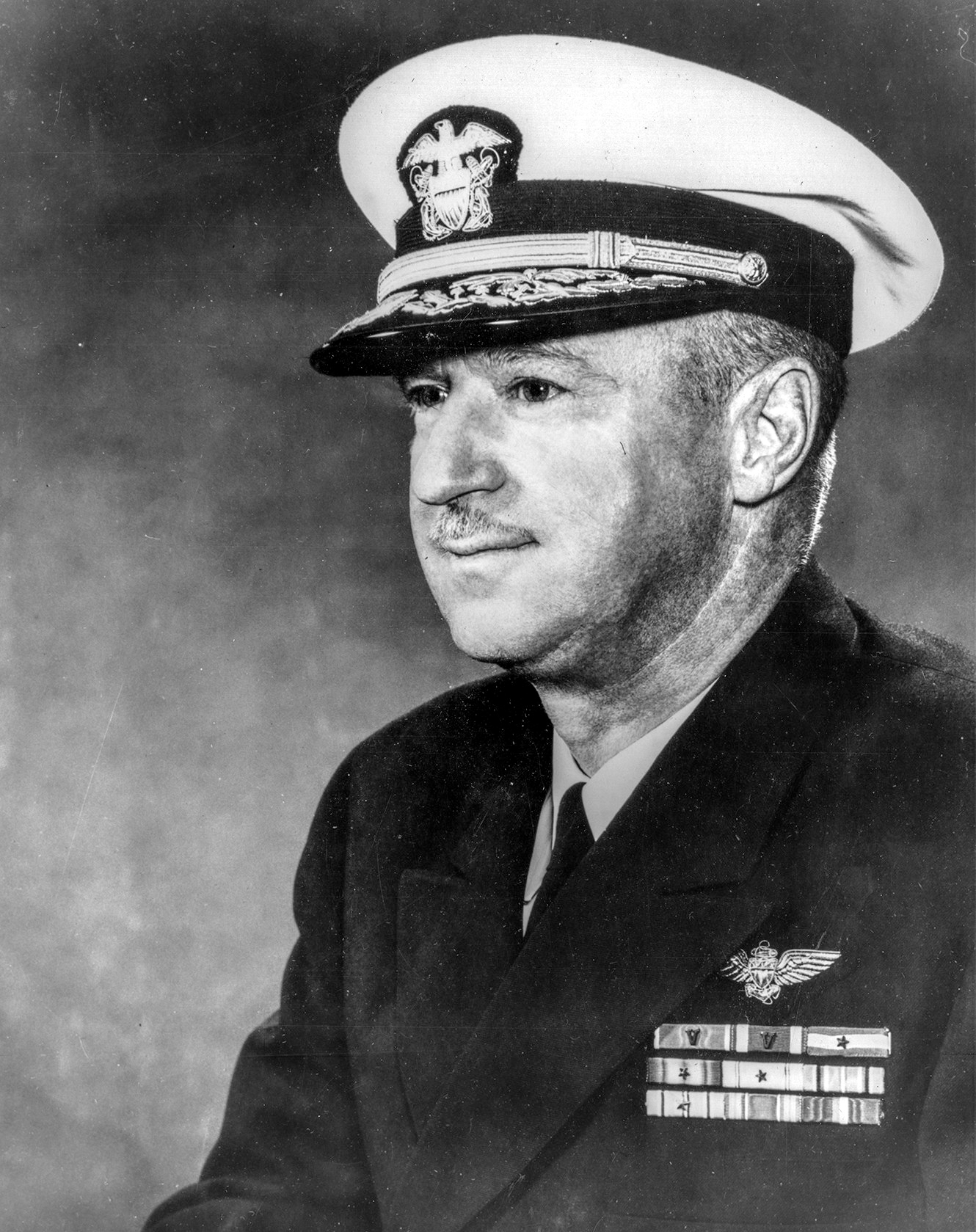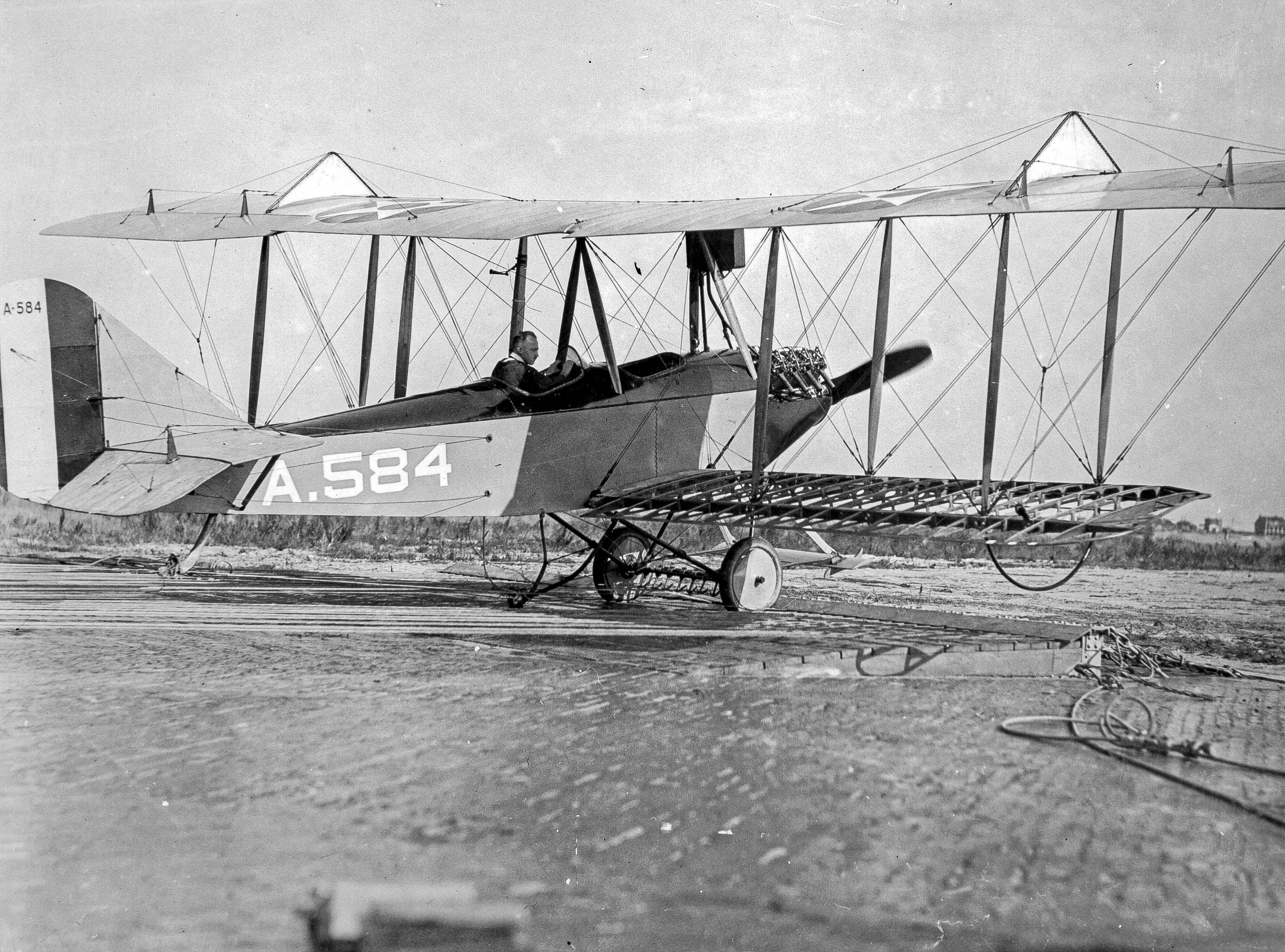
Pride, Alfred Melville, Adm., USN (Ret.)
(1897–1988)
Admiral Pride's early interest in aviation was followed by enlistment in Naval Reserve for World War I in 1917, aviation training, and brief overseas duty in France. Pride augmented to the regular Navy in 1921, later becoming one of the first flag officers who was not a Naval Academy graduate. He served in the scout plane detachment of the battleship USS Arizona (BB-39) in 1920 and then joined the commissioning crew of the first carrier USS Langley (CV-1) as one of her aviators. Pride describes in some detail his work in developing flight deck arresting gear. In 1927 he was in the commissioning crew of the USS Lexington (CV-2) and made the first landing aboard.
As a test pilot, he flew a number of experimental planes and made the first autogiro landing on carrier deck. He suffered a serious injury in a plane crash, nearly ending his career. He served in Bureau of Aeronautics and in patrol plane operations with Marc Mitscher. Pride was exec of the the USS Saratoga (CV-3) at the outbreak of World War II and then put the light carrier USS Belleau Wood (CVL-24) in commission as the first skipper and took her to combat in Pacific. He served with Kelly Turner in amphibious air support at the end of the Pacific War.
In the late 1940s and early 1950s, Pride commanded carrier divisions in the Sixth Fleet, sandwiched between a tour as Chief of Bureau of Aeronautics. The BuAer period is covered in some detail Pride's oral history as he talks about the aircraft acquisition process and various manufacturers with whom he dealt. His career wound up with tours as Commander Naval Air Test Center, Commander Seventh Fleet, and Commander Air Force Pacific. As fleet commander he had dealings with the Japanese and Nationalist Chinese.
Interview
In this selection from his first interview with Lieutenant (jg) Peter Spectre, USN, on 24 January 1970, Admiral Pride describes receiving orders as a young aviator in 1921 to design the arresting gear on the United State's first aircraft carrier, the USS Langley (CV-1), and how he went about succeeding in the task.
Lieutenant Spectre: How did you happen to get this assignment?
Admiral Pride: I haven't any idea. Chevalier walked up to me one day and said, "You make up a gear to stop the airplanes on the Langley." I said, "Aye, aye, Sir." And that's all there was to that.
Lieutenant Spectre: How long did it take you until you came up with a good design?
Admiral Pride: Not very long, probably not more than five or six months. I had to, because I understood the ship was going into commission in April of '22. This was the start of the summer of '21.
As I would get ideas, I would have to go to Norfolk to tell the draftsmen over there what we'd better put in the ship. I had to work pretty fast.
Lieutenant Spectre: What was the ultimate design that you came up with for the Langley?
Admiral Pride: The weights obviously were heavy and cumbersome. They had a great advantage that the system was self-contained. If the ship would lose its power, you could still fly airplanes after the wire had been pulled out. You had to get the wire back into battery; the weights took care of that. I had a come-along arrangement. The wire would play out, but then you could control its coming back. The first weights were just blocks of cast iron on the towers that supported the flight deck.
She came back from overhaul a year later, and much better designed weights were put in at Norfolk. They were put down in one of the holds of the ship. However, it was still a bulky and awkward system.
Lieutenant Spectre: Did it have to be adjusted when a different type of airplane was landed on the deck, say, a heavier airplane flew in after a light airplane?
Admiral Pride: On the first ones that was a distinct disadvantage. The landing area was about 256 feet long. On the earliest design we graduated the weights; the top weight was the lightest and the bottom was the heaviest. A light airplane would drag the thing out aways. When the top weight had moved up a little bit, then it picked up another weight, and so forth. So there was no adjustment. As planes became faster and larger and more diverse in their types, this became necessary.
After I finished the postgraduate course up at MIT, I was ordered to the Lexington to put her in commission. We had this fellow Norden that designed the Norden bombsight.* I talked with him some. He had been engaged to have a much more sophisticated system of stopping the aircraft and one that was adjustable for different weights and speeds of airplanes. Norden had designed this system which used a winch on each end of the crosswire. It was a winch that was hooked into the Waterbury speed gear that put pressure on a big brake. When I'd been on the Lexington a while (I was on her for a couple of years), I was flight deck officer, and there was an inherent difficulty with this gear. If a plane landed off center, it was inclined to go still further off center. In fact, it wanted to go over the side.
Lieutenant Spectre: You're talking about off the center of the runway?
Admiral Pride: Yes, of the flight deck. Any deviation from the center was aggravated as the plane went up the deck. This was a pretty serious thing. Also, it depended on the ship's power to get the gear back into battery for the next aircraft. You had to wind this cable back with an electric motor.
At the end of my cruise on the Lexington, I was ordered back to Norfolk to design another gear that wouldn't have these difficulties. I designed the hydraulic gear that is a much more sophisticated version, but it is the forerunner of the gear that is still used. The basic principle is still the same. That went into the Lexington and the Saratoga to replace the Norden gear.
* Carl L. Norden, a civilian consultant employed by the Navy.
About this Volume
Based on three interviews conducted by Lieutenant (junior grade) Peter H. Spectre, U.S. Coast Guard Reserve, from January through April 1970 and one interview conducted by Paul Stillwell in January 1984, the volume contains 234 pages of interview transcript plus an index. The transcript is copyright 1984 by the U.S. Naval Institute; the interviewee placed no restrictions on its use.




